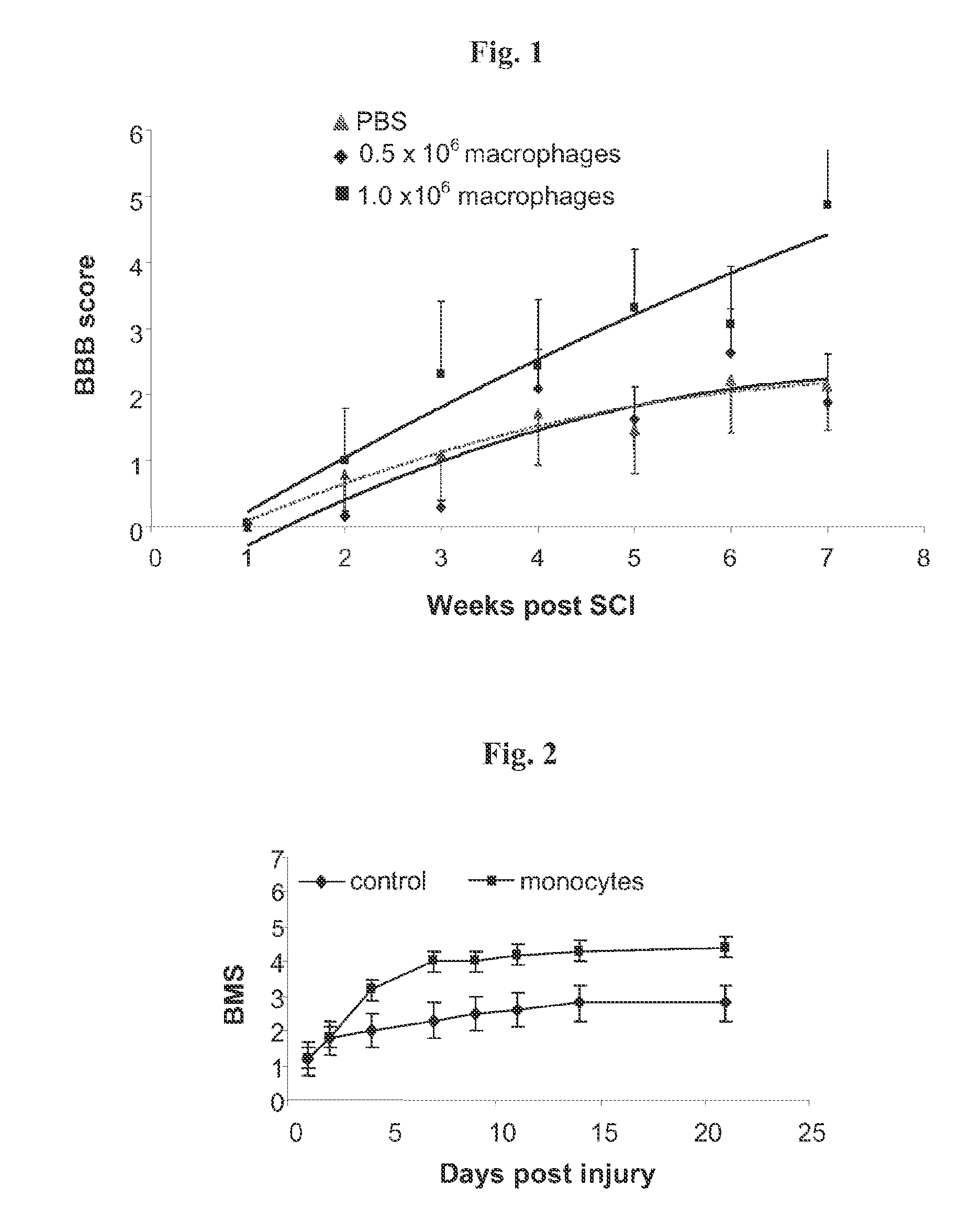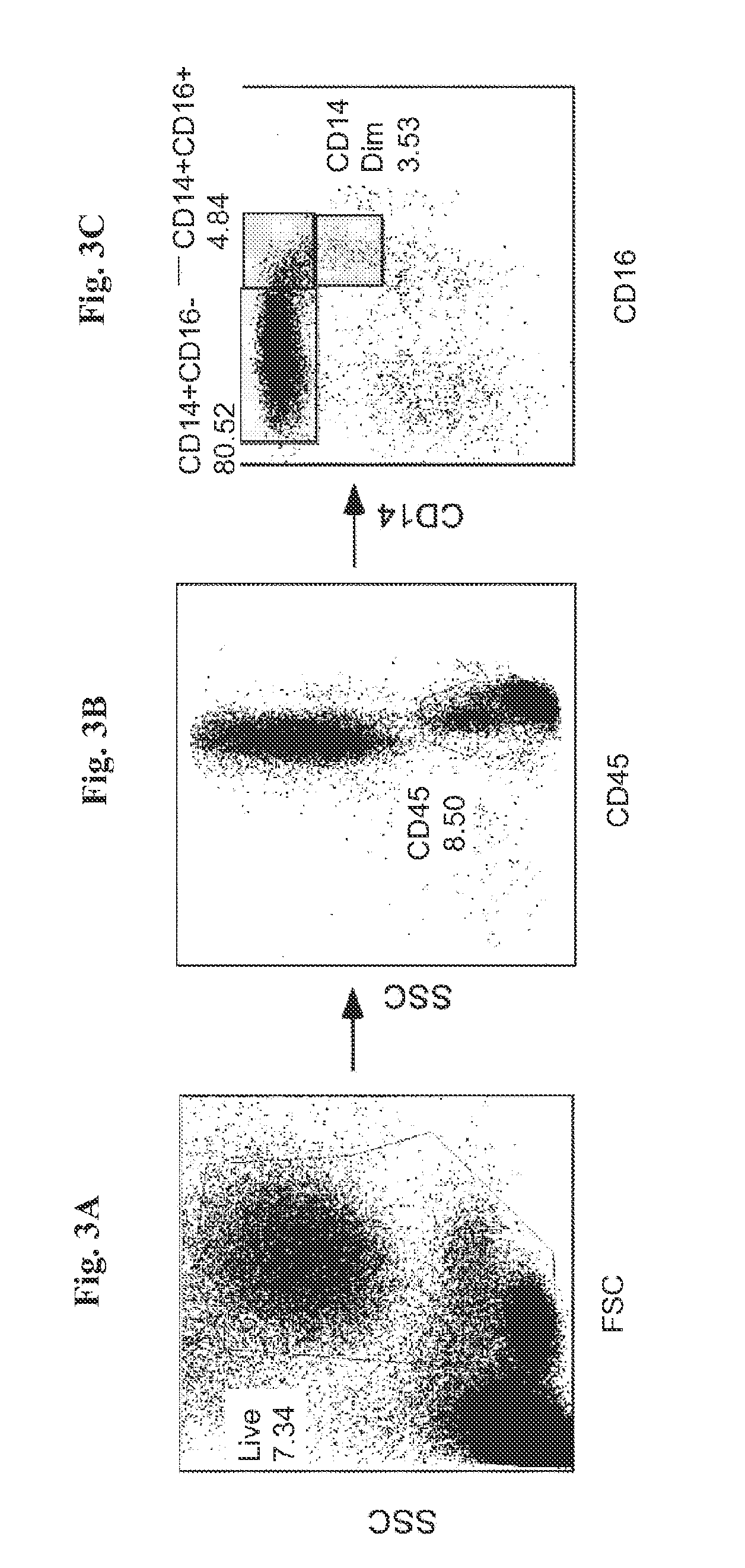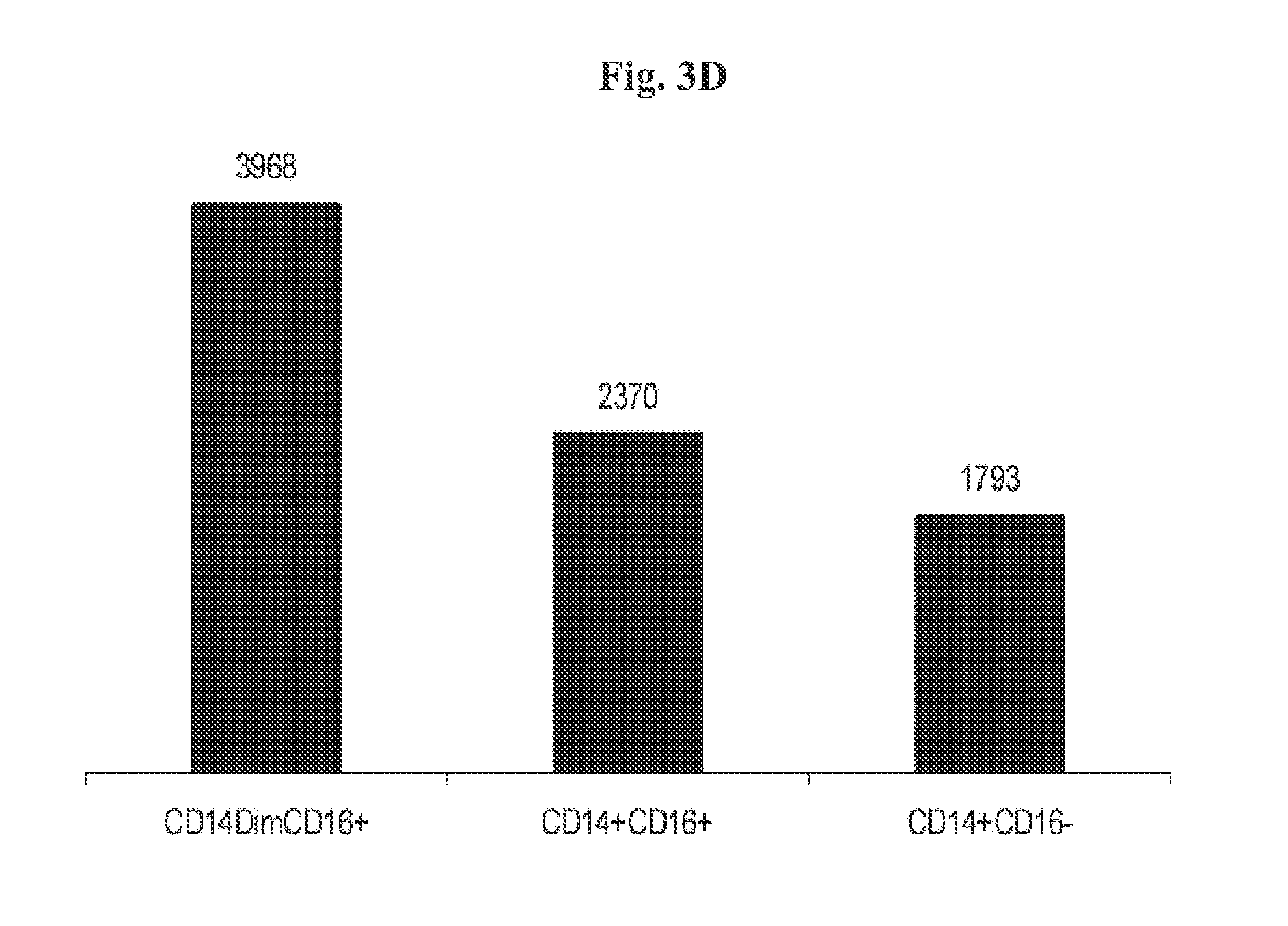Human monocyte sub-population for treatment of central nervous system injury
a technology of central nervous system injury and human monocytes, which is applied in the field of sub-populations of human monocytes, can solve the problems of severe spinal cord injury, paralysis and quadriplegia of varying degrees, and paralysis and quadriplegia
- Summary
- Abstract
- Description
- Claims
- Application Information
AI Technical Summary
Benefits of technology
Problems solved by technology
Method used
Image
Examples
example 1
Lumbar Puncture Injection of Skin-Activated Macrophages Promotes Functional Recovery in Rats Following Severe Spinal Cord Injury
[0065]At first, we were looking for a clinically feasible way to augment the number of blood-derived monocytes with the desired phenotype in the injured spinal cord using a minimally invasive way. We examined the efficacy of injecting skin-activated blood-derived monocytes into the cerebrospinal fluid (CSF) by lumbar puncture (LP), in reducing functional deficits following spinal cord injury in the rat.
TABLE 1Functional recovery in rats following severe spinal cord injuryTotal No.No. of animalsTreatmentof animalsrecovered (BBB >6)% recoveryPBS20630%0.5 × 106 MQ17318% 1 × 106 MQ161063%
[0066]Wild-type Sprague-Dawley rats were subjected to severe spinal cord contusion (see Materials and Methods). After 8 days, the injured animals were injected into the CSF with 0.5×106 or 1×106 skin-activated macrophages (MQ) or with vehicle (PBS), via LP. A dose dependent ef...
example 2
Injection of Non-Activated Bone-Marrow Derived Mouse Monocytes into the CSF Promotes Functional Recovery in Mice Following Spinal Cord Injury
[0067]Further we tested whether non-activated bone-marrow derived monocytes injected into the CSF via intracerebro-ventricles (ICV) would home to the injured spinal cord parenchyma. Wild-type mice were subjected to spinal cord contusion (see Materials and Methods). After 3 days, the injured animals were ICV injected with isolated green flourescent protein (GFP) expressing-naive bone marrow derived monocytes (0.5×106 Cx3cr1GFP / + monocytes), and analyzed for the presence of the injected cells at the site of injury. Immunohistochemical analysis of the injured site 4 days following injection revealed the presence of the injected GFP expressing cells in the injured parenchyma, in close proximity to the margins of the lesion site (not shown [See explanation at Brief Description of Drawings). Similarly treated animals were followed for locomotor activ...
example 3
Isolation of Human Mononuclear Cells that Express High Level of CX3CR1 and Low Level of CCR2 from PBMC
[0069]In humans, three populations of monocytes are defined by the expression of CD14 and CD16, namely: CD14+CD16−, CD14+CD16+, and CD14dimCD16+. The CD14+CD16+ monocytes represent 80% to 90% of blood monocytes, and express high levels of the chemokine receptor CCR2 and low levels of the chemokine receptor CX3CR1 (the receptor of Fractalkine). In contrast to this major subset, human CD16+ monocytes express high levels of CX3CR1 and low levels of CCR2 (Cros et al., 2010). According to Cros et al (2010), gene expression analyses indicated similarities between human CD14dimCD16+ and murine patrolling Gr1dim monocytes. The CD14dimCD16+ cells are bona fide monocytes involved in the innate local surveillance of tissues and the pathogenesis of autoimmune diseases.
[0070]In order to isolate from peripheral blood mononuclear cells (PBMC) the CD14dimCD16+ cells that express high level of CX3CR...
PUM
 Login to View More
Login to View More Abstract
Description
Claims
Application Information
 Login to View More
Login to View More - R&D
- Intellectual Property
- Life Sciences
- Materials
- Tech Scout
- Unparalleled Data Quality
- Higher Quality Content
- 60% Fewer Hallucinations
Browse by: Latest US Patents, China's latest patents, Technical Efficacy Thesaurus, Application Domain, Technology Topic, Popular Technical Reports.
© 2025 PatSnap. All rights reserved.Legal|Privacy policy|Modern Slavery Act Transparency Statement|Sitemap|About US| Contact US: help@patsnap.com



